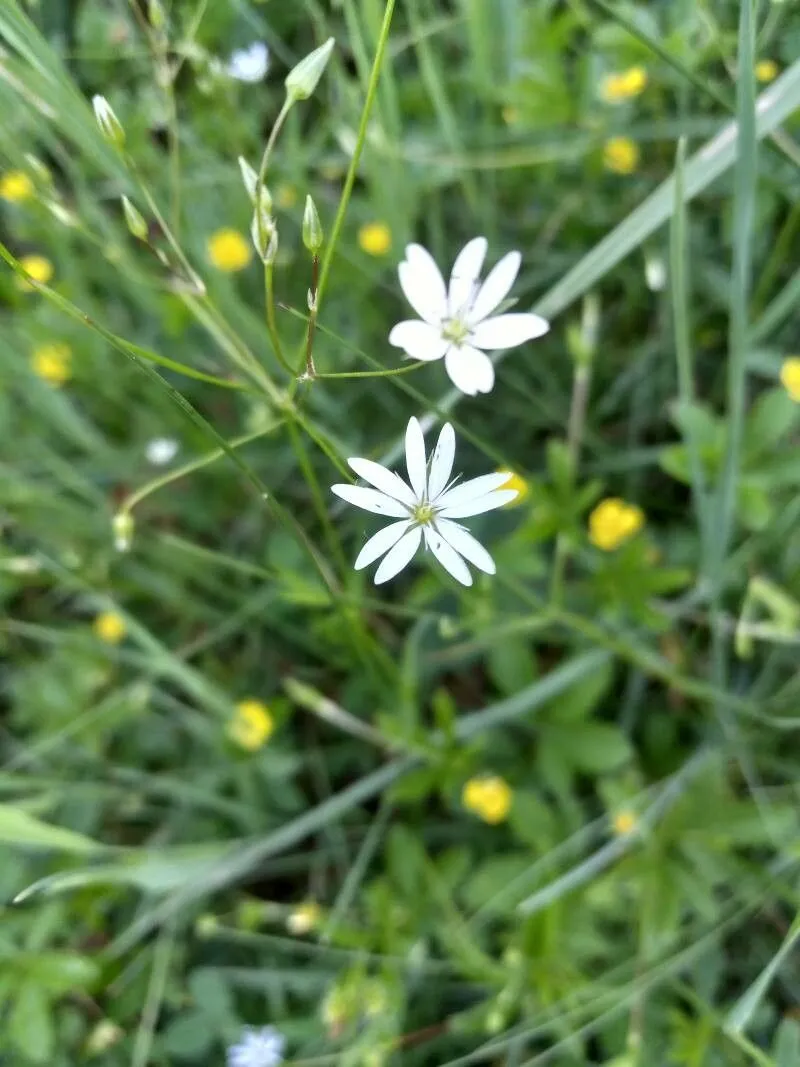
Author: Muhl. ex Willd.
Bibliography: Enum. Pl.: 479 (1809)
Year: 1809
Status: accepted
Rank: species
Genus: Stellaria
Vegetable: Unknown
Observations: Temp. Northern Hemisphere
The Longleaf Starwort, known scientifically as Stellaria longifolia, is a fascinating and delicate plant found predominantly in the temperate regions of the Northern Hemisphere. As a member of the Caryophyllaceae family, this herbaceous perennial is distinguished by its slender and elongated leaves, which are readily recognizable among plant enthusiasts and botanists alike.
First described extensively in 1809 by Muhl. ex Willd. in their work “Enumeratio Plantarum” (page 479), Stellaria longifolia has captivated the scientific community for centuries. The plant typically thrives in moist, shaded environments, often preferring the understory of forests or the edges of wetlands where it can benefit from the rich, organic soils and partial sunlight.
One of the defining characteristics of Longleaf Starwort is its star-like white flowers, which contribute to its common name. These small, delicate flowers, usually found in clusters, bloom from late spring to early summer, offering a subtle but beautiful display. Each flower consists of five bifurcated petals that give the appearance of ten slender rays, centered around a cluster of conspicuous yellow stamens.
The long, narrow leaves of Stellaria longifolia grow in opposite pairs along the thin, slightly hairy stems and can often exceed the length of the flowers, adding to the plant’s graceful appearance. These leaves usually taper to a point and have a simple margin, giving them a fine, linear shape that sways gently in the breeze.
In addition to its aesthetic appeal, Longleaf Starwort plays a role in the ecosystem by providing habitat and nourishment for various species of insects, including bees and butterflies, which are essential pollinators. Its presence in the wild is a marker of ecological health, as it is often found in areas that are relatively undisturbed by human activity.
Despite its somewhat understated presence, Stellaria longifolia holds a certain charm for those who take the time to observe it closely. Its delicate structure and graceful form are perfect examples of the subtle beauty found within the plant kingdom.
Deu: langblättrige sternmiere
Eng: long-leaf starwort, longleaf chickweed, longleaf starwort, long-leaved starwort, long-leaved chickweed, long-leaved stitchwort
Fin: metsätähtimö
Swe: metsätähtimö, skogsstjärnblomma
Nob: rustjerneblom
Nno: rustjerneblom
Fra: stellaire à longues feuilles
Sme: vuovdehilsku
En: Longleaf starwort, Long-leaf starwort, Longleaf chickweed, Long-leaved starwort, Long-leaved chickweed, Long-leaved stitchwort
Fi: Metsätähtimö
Fr: Stellaire à longues feuilles
De: Langblättrige Sternmiere
Se: Vuovdehilsku
Nb: Rustjerneblom
Nn: Rustjerneblom
Sv: Metsätähtimö, Skogsstjärnblomma
Taken Jun 15, 2022 by William Wattles (cc-by-sa)
Taken Feb 6, 2010 by EOL − Keir Morse (cc-by-nc-sa)
Taken Feb 6, 2010 by EOL − Keir Morse (cc-by-nc-sa)
Family: Myrtaceae Author: (F.Muell.) K.D.Hill & L.A.S.Johnson Bibliography: Telopea 6: 402 (1995) Year: 1995 Status:…
Family: Rubiaceae Author: Pierre ex A.Froehner Bibliography: Notizbl. Bot. Gart. Berlin-Dahlem 1: 237 (1897) Year:…
Family: Sapindaceae Author: Koidz. Bibliography: J. Coll. Sci. Imp. Univ. Tokyo 32(1): 38 (1911) Year:…
Family: Asteraceae Author: A.Gray Bibliography: Pacif. Railr. Rep.: 107 (1857) Year: 1857 Status: accepted Rank:…
Family: Fabaceae Author: Medik. Bibliography: Vorles. Churpfälz. Phys.-Ökon. Ges. 2: 398 (1787) Year: 1787 Status:…
Family: Aspleniaceae Author: (Cav.) Alston Bibliography: Bull. Misc. Inform. Kew 1932: 309 (1932) Year: 1932…